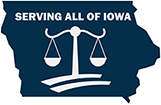- Pocahontas Personal Injury Attorneys
- Phone: 641-792-3595
- Directions
Life can be abruptly disrupted by accidents and injuries. During these tough moments, personal injury lawyers are indispensable. They advocate for those harmed by others' negligence, ensuring they get the compensation they deserve. This article explores the significant role personal injury lawyers play in helping individuals navigate their claims and rebuild their lives.
Rules of Driving on the Road When a Pedestrian is Present
According to the National Highway Traffic Safety Administration, approximately 70,000 pedestrians are injured each year in motor vehicle accidents on the roads and highways of the United States. Despite the presence of well-established laws for pedestrians and motorists, many of these accidents occur due to ignorance about the rules of driving around pedestrians.
Iowa Rules of the Road Around Pedestrians
In addition to general Iowa traffic laws, the Iowa Department of Transportation has specific regulations for motorists in situations where a pedestrian is present. The responsibility heavily lies on the motorist, as vehicles can seriously injure pedestrians if not operated correctly.
Key Rules for Motorists:
- Right of Way: Motorists must give the right of way to pedestrians when entering or leaving driveways, parking lots, or alleys.
- Crosswalks: Motorists must also yield to pedestrians crossing at intersections, whether on a marked or unmarked crosswalk, when there are no traffic signals.
- Special Precautions: Drivers must exercise special caution in residential areas, near schools, shopping centers, parking lots, and congested areas such as downtown.
Bicycle Accidents in Iowa: Prevention and Response
In 2011, Iowa experienced five pedalcyclist fatalities, according to the National Highway Traffic Safety Administration. Polk County had the highest number of bicycle-car accidents in Iowa from 2009-2014. The goal is to reduce the number of bicyclist accidents to zero. Understanding common types of bicycle accidents and how to avoid them is crucial for cyclists.
Common Types of Bicycle Accidents and Prevention
1. Right Hook Accident
A right hook accident occurs when a car making a right-hand turn cuts off a cyclist. These accidents can happen at intersections or when pulling out of a driveway or parking lot.
Prevention Tips:
- Always position yourself slightly in front of vehicles at red lights or stop signs.
- Avoid passing vehicles on the right; instead, pass on the left.
2. Dooring Accident
A dooring accident happens when a cyclist rides between traffic lanes and parked cars, and a motorist unexpectedly opens a door, blocking the cyclist's path.
Prevention Tips:
- Use bike lanes if available.
- Stay alert for parked cars and slow down when approaching one.
3. Vehicle Turning Left
Accidents occur when left-turning vehicles fail to see an oncoming cyclist and turn into their path.
Prevention Tips:
- Ensure your bike has a light and wear bright colors.
- Make eye contact with drivers before proceeding through intersections.
4. Failure to Yield
Accidents also occur when cyclists misjudge the speed and distance of oncoming cars and fail to yield.
Prevention Tips:
- Exercise caution and double-check before entering intersections, even if you have the right of way.
Legal Assistance for Bicycle Accidents
If you are in a bicycle accident in Iowa, the attorneys at Walker, Billingsley & Bair can handle all aspects of your case, including determining fault, filing your claim for damages, and pursuing a lawsuit if necessary.
Iowa Bicycle Laws: Important Regulations for Safety
Understanding Iowa's bicycle laws is crucial for both cyclists and motorists. Compliance with these laws helps ensure safety on the roads.
Key Bicycle Laws in Iowa
- Pass on the Left: Cyclists must pass cars on the left, moving into the left lane before passing and then returning to the right lane.
- Ride With Traffic: Cyclists must ride in the same direction as traffic, as riding against traffic increases the risk of head-on collisions.
- Use Lights When Dark: Bicycles must have a front white light and a rear red light or reflector visible from at least 300 feet when riding after sunset or before sunrise.
- Stop for School Buses: Cyclists must stop for school buses displaying stop signs or flashing lights, similar to other vehicles.
- Use Proper Hand Signals: Cyclists must use hand signals for turning and stopping:
- Left turn: left arm extended horizontally
- Right turn: left arm bent at the elbow, hand facing upwards
- Slow down/stop: left arm bent at the elbow, hand facing downwards
- Report Traffic Crashes: Cyclists must report all traffic crashes and exchange information with other involved parties.
- Avoid Non-Bicycle Areas: Cyclists are prohibited from riding on interstates and certain highways, and many cities restrict riding on sidewalks.
We Are Here To Help
Remember, you are not alone in recovering from your injuries. We have helped thousands of Iowans through their physical, emotional, and financial recoveries. If you have questions about what you are going through, feel free to call our office for your confidential injury conference. We will take the time to listen to you and give you our advice concerning your injury matter at no cost or risk to you.
Free Book at No Cost
If you are not ready to speak with an attorney yet but would like to learn more about Iowa injury cases including tips about how you can avoid making common costly mistakes request a copy of our Iowa Personal Injury book which includes 14 myths about Iowa injury cases and 5 things to know before hiring an attorney.
If you have specific questions about your injury matter feel free to call our office to speak with our Injury team at 641-792-3595 or use our Chat feature by clicking here 24 hours a day/7 days per week. Your information will remain confidential and there is no cost or obligation.

